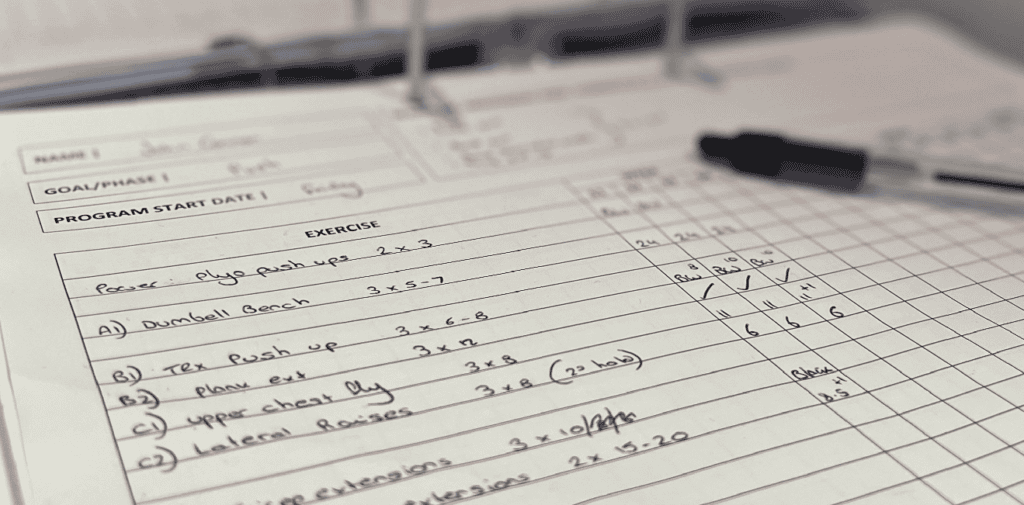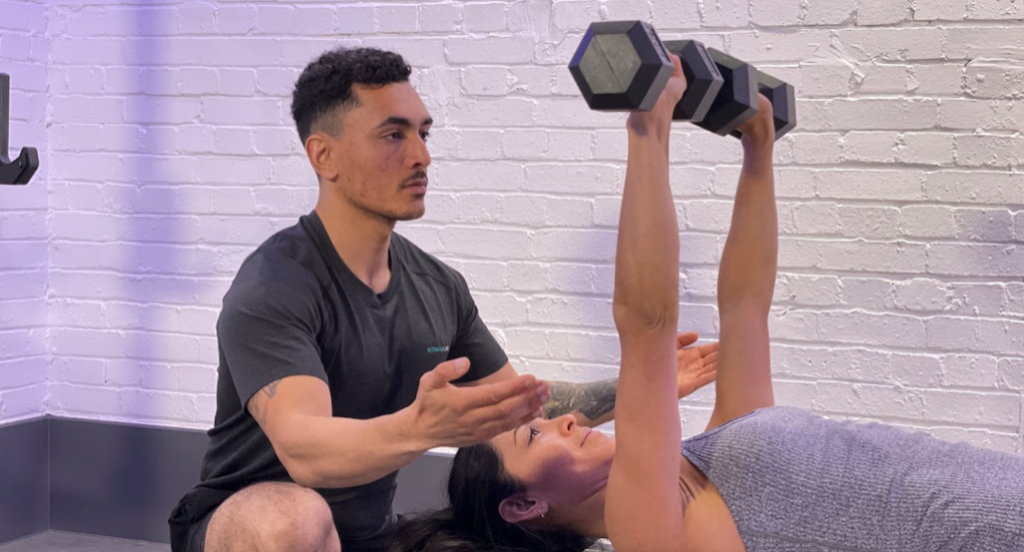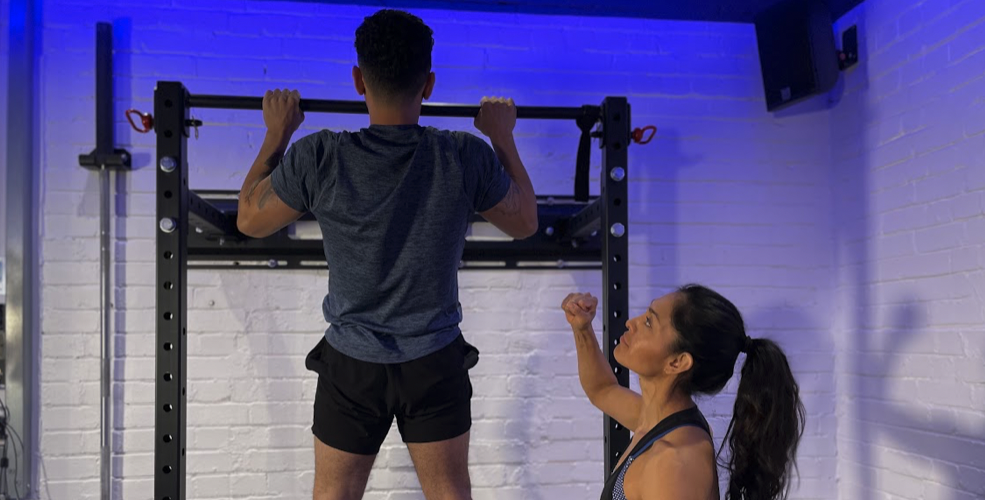One of peoples’ biggest reservations about any kind of fitness is wondering whether or not what they’re doing will take them closer to their goals. And, since many people have some element of weight loss including in their goals – it’s useful to know if what you’re doing will take you there!
In this article, we’ll look at how sets and reps vary based on your goals, specifically focusing on fat loss and strength.
You will find out what sets and reps are and how they can be manipulated for different purposes.
‘Sets’ and ‘reps’ meaning
‘Reps’ stands for repetitions and refers to the number of times you complete a single exercise continuously before resting. Sets refers to the number of times you produce x number of repetitions. These sets will be separated by a period of rest.

You will generally see this written as sets first and reps second e.g. 3×12. This can be very beneficial to help you both mentally and physically, knowing how many times you have to perform the exercise. This will give you more control over your training, allow you to plan weights, track progression as well as allowing you to target and achieve your goals.
How many reps should there be in set?
As mentioned previously, programming sets and reps can help you control your training. This is because you can manipulate the number of reps you are doing to achieve your goal. The number of reps that should be in a set, depends on a number of things including your training age and goals.
Beginners should begin with higher reps (10-15), this allows them more time to gain a feel for the movement rather than breaking it up every few reps with a rest period and a new set (Baechle & Earle, 2019). Similarly due to the higher risk that comes with lifting heavier weights, it’s better to start lighter weight and higher reps to help gain adaptations and reduce the risk of injury.

More experienced lifters should be able to lift heavier weights more safely having refined the technique better. They should then adapt the number of reps per set based on their goals.
If your goal is to gain strength you should be lifting heavy weights for less reps (1-6) (Tuminello, 2014). If you are looking to increase muscle hypertrophy, you should be looking for mid weight for mid reps (6-10) (Hofmekler, 2008). If you are looking to increase your muscular endurance you should be lifting lighter weights for more reps (12+) (Baechle & Earle, 2019). If you are looking to lose fat, then you are looking to lift light to mid weight for higher reps (10-15) (Tuminello, 2014).
What’s a good combination of reps and sets for fat loss?
If it is fat loss, you are specifically looking for then 2-4 sets of 10-15 reps is ideal. This should be at a weight that challenges you to complete the last few reps of each set.

This higher number of reps has been proven the best for fat loss due to the physiological changes in muscle and connective tissues caused by the increased time under tension compared to shorter rep ranges (Tuminello, 2014).
How do sets and reps compare for strength vs fat loss?
As mentioned above 2-4 sets of 10-15 reps is ideal for fat loss. In comparison the ideal for strength is 1-6 sets of 1-6 reps. When looking to develop strength we are aiming to produce as much force as possible to move heavy loads for fewer reps (Tuminello, 2014).
If you’d like to learn more about why certain numbers of sets and reps are good for increasing strength – you can read our detailed blog about it here: How Many Sets Should I do for Strength?
Weight loss vs fat loss
Weight loss and fat loss are terms often wrongly used interchangeably. Weight loss refers to reducing your mass on the scales. Fat loss refers more specifically to reducing the amount of fat mass on your body.
Your weight is made up of many things including your muscle mass, bone mass, organ mass, fluid levels and fat. Your standard scales will not tell you in this detail, it is therefore very hard to tell the reason you are losing/increasing weight. For example, you may be starting/increasing your weight training and find that your weight is actually going up. This could be due to your muscle mass increasing and your fat mass decreasing.

So, it is important to understand whether it is weight or fat that you want to lose. Both are possibilities – but generally speaking, most people are more concerned about the health and aesthetic benefits of carrying less fat.
Don’t forget – if you’d like to hear more about how we can help you work towards your goals, you’re welcome to get in touch. Whether you’d like to train with us here in London – or you’re keen to find a good online trainer, we’re perfectly placed to help.
References
- Baechle, T. R., & Earle, R. W. (2019). Weight training: steps to success. Human Kinetics.
- Hofmekler, O. (2008). Maximum Muscle, Minimum Fat: The Secret Science Behind Physical Transformation. North Atlantic Books.
- Tumminello, N. (2014). Strength Training for Fat Loss. Human Kinetics.

